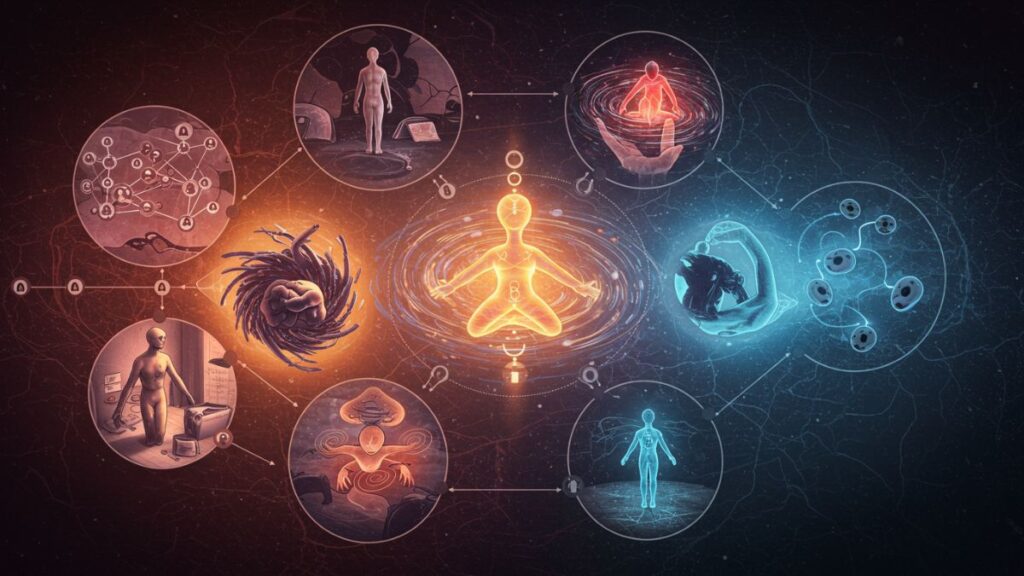The mating press pose is a term that has drawn attention in both media and certain online communities. Though the name may suggest something controversial, the mating press pose refers to a specific physical position used in intimate situations. It is often recognized in adult-themed content, but its origins and significance span much beyond that. In this article, we aim to break down what the mating press poses truly involves, where it comes from, and how it affects individuals’ perceptions of intimacy, relationships, and personal boundaries.
Defining the Mating Press Pose
At its core, the mating press pose is an intimate posture involving two partners. One partner typically lies on their back with their legs bent, while the other positions themselves over the top of their partner, pressing close. This pose, although quite simple in physical form, is often seen as a position of closeness, dominance, and heightened physical connection.
While it might seem intense in its description, the mating press poses is primarily a way to facilitate deeper physical intimacy between partners. Its portrayal in media often amplifies the emotional intensity of the interaction, contributing to its association with passion and dominance.
Origins of the Mating Press Pose
The mating press pose is far from a modern invention. It can be traced back through various cultural depictions and historical contexts. Ancient art and literature sometimes highlighted physical closeness and connection, albeit in different forms. These representations, whether metaphorical or literal, laid the groundwork for what we now identify as positions in intimate settings.
The term itself may have gained prominence in recent years, especially with the rise of digital media and explicit content. However, the underlying concept is one that has existed for centuries. Evolving to take on new meanings in the modern world. The mating press poses portrayal in media is often used as a visual shorthand for emotional intensity, demonstrating the connection between partners.
The Psychological Dynamics of the Mating Press Pose
Much like other intimate poses, the mating press pose can have profound psychological effects on both partners involved. For some, the close proximity encourages a deep sense of trust and emotional bonding. The pose can signify a level of emotional vulnerability, as both partners are physically close and engaged in a shared experience. For others, the positioning may feel empowering, with one partner potentially assuming a dominant role.
The key psychological element here is the sense of closeness. The mating press poses highlights a level of emotional and physical connection that can enhance feelings of trust, affection, and security. However, for others, the intense nature of the pose might invoke a different emotional response. It is essential to understand that different individuals can interpret and react to intimate positions like this in a variety of ways.
Media Influence on the Perception of the Mating Press Pose
The mating press pose has undoubtedly been influenced by the way it is portrayed in media. Adult films, TV shows, and books often showcase intimate poses to communicate themes of dominance, control, or intense passion.
In mainstream culture, intimate poses like the mating press poses can be used as metaphors for power dynamics and relationship dynamics. Whether in fiction or adult content, these visual representations help shape society’s collective understanding of what intimacy can look like. The depiction of such poses often contributes to the narrative of dominance versus submission or closeness versus distance. But it’s essential to recognize that these portrayals are artistic choices, not necessarily accurate representations of real-life relationships.
The Importance of Consent in the Mating Press Pose
As with any intimate interaction, consent is the cornerstone of the mating press pose. This pose, like any other form of physical intimacy, requires that both individuals involved communicate openly about their desires, boundaries, and comfort levels. Without mutual consent, the emotional and physical impacts of such a pose could be harmful rather than beneficial.
Consent should always be at the forefront of any intimate encounter. When both individuals are open and respectful of each other’s boundaries. The mating press poses can become an experience of trust and connection. However, failure to communicate openly and effectively can lead to discomfort and emotional harm. Therefore, mutual understanding and respect are vital in ensuring that any intimate act is consensual and positive for both parties.
Exploring the Role of the Mating Press Pose in Modern Relationships
In today’s diverse relationship landscape, intimacy takes many forms, and the mating press pose is just one example of how physical closeness can be expressed. For some, this pose may symbolize connection and emotional intimacy. For others, it may represent a more dominant or submissive role within the relationship dynamic. The key is to understand that each couple’s needs and preferences will differ, and what works for one couple might not be suitable for another.
In modern relationships, there is a growing emphasis on communication, mutual respect, and shared experiences. The mating press poses, like any other form of intimacy, should be approached with care and attention to the emotional and physical needs of both partners. Ensuring that both individuals feel heard, respected, and safe is paramount to fostering a healthy, fulfilling relationship.
Conclusion:
The mating press pose is more than just a physical position; it’s a reflection of the complex dynamics of intimacy and power in human relationships. Whether seen in media or practiced in real life, the pose emphasizes the importance of communication, consent, and respect.


